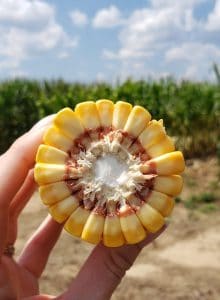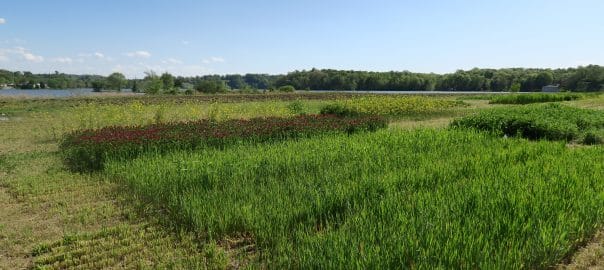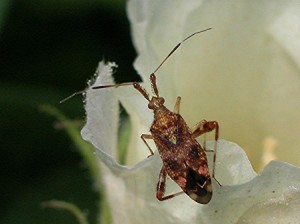 Our 2019 Tennessee corn silage hybrid trial report is now available on search.utcrops.com/corn-silage. We had fewer hybrids than usual this year and all produced similar yields, averaging 8.4 tons/ac dry weight. Differences did show in terms of quality, however, with some hybrids producing significantly higher milk/ton. Mean separation (MS) values help us identify statistical differences between hybrids. Look for the “A” group to identify hybrids that were top performers within each trait. If looking at the online tables, be sure to scroll right to see all of the quality and agronomic traits evaluated. Online tables can be found here or download the pdf and/or excel tables.
Our 2019 Tennessee corn silage hybrid trial report is now available on search.utcrops.com/corn-silage. We had fewer hybrids than usual this year and all produced similar yields, averaging 8.4 tons/ac dry weight. Differences did show in terms of quality, however, with some hybrids producing significantly higher milk/ton. Mean separation (MS) values help us identify statistical differences between hybrids. Look for the “A” group to identify hybrids that were top performers within each trait. If looking at the online tables, be sure to scroll right to see all of the quality and agronomic traits evaluated. Online tables can be found here or download the pdf and/or excel tables.
Category Archives: Corn

Cover Crop Species Selection for Tennessee Corn and Soybean Systems
In Tennessee, corn harvest is beginning and soybeans will be right around the corner. Time to start talking about cover crops, in particular, what options are best for your cropping system. Cover crops offer many benefits to cash crop systems, including weed suppression, nutrient credits, improved soil health, pollinator habitat, and more. Many species can be used as cover crops but each differs in the ecological benefits it can provide to a system as well as in its adaptation to production regions in Tennessee. This adaption is highly dependent on management practices, especially time of planting. A species selected as a top performer when planted after corn may not do so well in a system following soybeans, where cover crop planting is two to four weeks later. Planting a poorly adapted species reduces your return on investment in a cover cropping system, so let’s talk about what works in Tennessee. Continue reading
Corn disease update – Southern rust confirmed in TN
This week I received the first sample of southern rust in corn from Martin, TN (Weakley Co.).
Relatively low disease in Tennessee Corn
With no reports of southern rust in Tennessee (only some in GA and LA reported at this time), it is a relatively quiet disease season in corn, with the exception of grey leaf spot and physioderm brown spot in Tennessee.
Insect Calls of the Week (July 3, 2019)

Plant bugs … I’d classify the overall plant bug pressure in cotton as average, although we are seeing a few more clouded plant bugs than in recent years. Until bolls are present, count tarnished and clouded plant bugs the same. Once bolls are present, I suggest counting clouded plant bugs as equivalent to 1.5 tarnished plant bugs when making a treatment decision, primarily because clouded plant bugs are more inclined to feed on bolls. As cotton begins blooming, Continue reading
Insect Issues This Week (6-20-19)
Catchy title eh? No major insect problems are occurring on a wide basis, but the phone is ringing more frequently about several issues. Continue reading
Managing Nitrogen with Scattered Rainfall Conditions
With recent weather events in the Midwest, corn prices have started to climb and growers are paying closer attention to protecting corn yield. Continue reading
Corn and Cotton Producers’ Prevented Planting Decision
Federal crop insurance programs have a prevented planting provision that can protect producers from the financial losses and risks associated with not being able to plant the intended crop within the desired planting period. Revenue Protection, Revenue Protection with Harvest Price Exclusion, Yield Protection, and Area Risk Protection insurance policies pay indemnities if producers were unable to plant the insured crop by a designated final planting date or within any applicable late planting period due to natural causes, typically drought or excess moisture. This post highlights several components of those provisions and provides a few examples.
Kevin Adkins, Graduate Research Assistant, Department of Agricultural and Resource Economics, University of Tennessee
**Christopher N. Boyer, Associate Professor, Department of Agricultural and Resource Economics, University of Tennessee 302-I Morgan Hall Knoxville, TN 37996 Phone: 865-974-7468 Email: cboyer3@utk.edu **Corresponding author Continue reading

